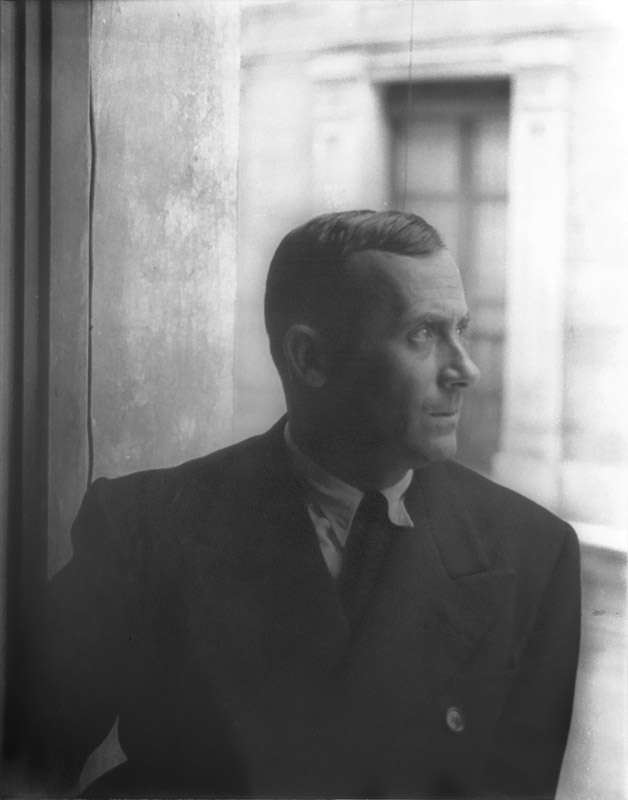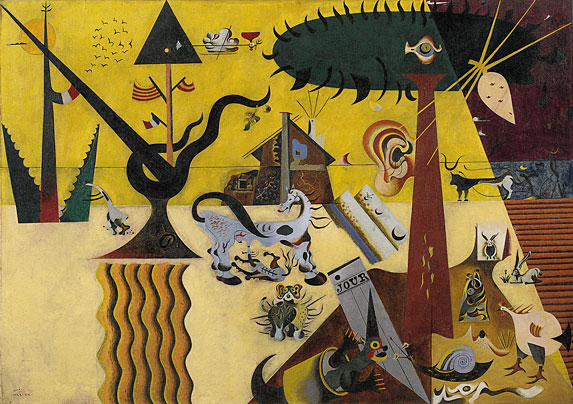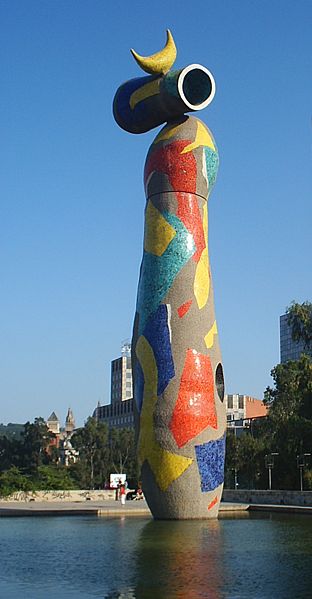| Joan Miró Famous Artwork | |
| The Tilled Field, 1924 | |
| The Farm, 1921–1922 | |
| Dona i Ocell, 1983 | |
| Still Life with Old Shoe, 1937 | |
| Portrait of Vincent Nubiola, 1917 | |
| Hands flying off toward the constellations, 1974 | |
| Complete Works |
Joan Miró was born April 20, 1893 in Barcelona, Spain. His dad was a gold smith and watch maker. Joan had an early passion for art, and took drawing classes while at primary school. As for his other classes though, he did rather poorly. Art was the only thing he excelled at. In 1907, he enrolled at School of Industrial and Fine Arts in Barcelona, the Lonja, and stayed there until 1910.
In 1912 while recovering from typhoid, he officially decided he wanted to be a painter. He spent three years at a school run by Francesco Galí, and studied art at the Cercle Artístic de Sant Lluc. He had his first solo exhibition in 1918 at the Daluma Galleries. All the art in the show was influenced by Fauvism, Cubism, folk-Catalan art, and Roman Frescoes; his work at this point combines many types of art, but it does not look anything like his mature work.
He traveled to Paris and met Picasso in 1920. Miró considered it an honor to meet one of his favorite painters, but post-meeting, Joan’s work became surrealist; as if Picasso helped make up his style and mind. He held his own solo exhibit in Paris in 1921 at the La Licorne Gallery. Ernest Hemmingway bought one of his paintings, The Farm, which was a fauvist like piece. One of his most recognized works was painted a few years following this. Harlequin’s Carnival, 1925, is really spastic, and confusing. It has a bunch of toys and imaginary things all over the canvas, making it look like a kid’s mind. This piece represents what his mature work would resemble.
Miró’s best friend was Max Ernst, another Surrealist artist and together, they were asked to design the costumes and set for the ballet Romeo and Julliet in 1926. It was performed in Paris by the Ballets Russes. Soon after, Joan started becoming interested in other types of art, like collages, lithographs, etchings, and engraving. His collage Spanish Dancer is the most well-known.
In 1929, Miró married Pilar Juncosa, and they had a daughter, Dolores on July 17, 1931. Soon after, the Spanish Civil War broke out, so they moved to Paris. Joan was able to continue his art there and raise his family. They moved back to Spain in 1940. During the time in Spain though, his art started showing Surrealism. For instance, Composition, made in 1933, is kind of a fantasy/dream-like state. It has the influence of Henri Matisse in the lines, but Sigmund Freud in the overall idea. It suggests that you have to search for your identity in your mind.
During the late 50’s, Joan focused on public art projects like murals and plop art. The most famous is the Wall of the Moon and Wall of the Sun, made from 1957-1958, and are located at the UNESCO building in Paris. The murals are ceramic, which became his craze at this time in his art.
In 1972, he created The Joan Miró foundation, Center for Study of Contemporary Art. His friend designed the buildings, and he donated all his art to this place, which was about 240 paintings, 175 sculptures, nine textiles, four ceramics, and 8,000 drawings. Following the opening of his museum, he went to Wichita State University in Kansas and did the glass mosaic Personnage Oiseaux from 1972-1978.
Four years before his death, Joan was named Doctor Honoris Causa by the University of Barcelona. During the last couple years of his life, he suffered from heart disease, and he died on December 25, 1983 in Palma de Mallorca, Spain. He was 90.
Throughout his life, Miró’s goal for his art was to be able to make the painting into a poem, for a picture speaks a thousand words, and a Miró could speak two thousand. He also sought to balance compositions. Like The Farm, 1920, which is the piece Hemmingway bought, the cracked wall balances out the chicken coup on the other side of the picture. The ladder in The Farm symbolizes escape, which Miró thought completed the picture, for it is a work of art and a poem.
According to Miró, his work “always takes place in three stages: first, the suggestion, always forms the material; second, the conscious organization of these forms; and third, the compositional enrichment.” For example, a crack on the wall could be the suggestion, then he would build off that with some further shapes and forms, and after that finish the painting off.
Joan Miró’s life philosophy was, “you must always plant your feet firmly on the ground if you want to jump into the air. The fact that I come down to Earth from time to time makes it possible to jump all the higher.” His artwork in the beginning was small, and critics didn’t pay too much attention to it. But each time he started a new piece, it became more and more popular, more and more influential, which led to his significance in today’s art world and history.



